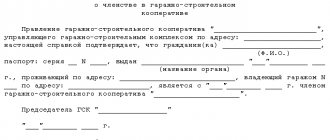It turns out that building a room for a car is faster than legalizing it. The owner may appear at any moment, and then the building will become a bone of contention; it is very likely that the site will have to be vacated and the building removed.
There are two options:
- Agree. The prospect is not bright - you will be left with nothing: lose your garage, pay a fine.
- Object and try to formalize the structure.
You can legalize a garage even without documents if you know what to do and where to go.
Which garages cannot be privatized
There are cases when wasting time on bureaucratic procedures is pointless:
- the building is unsafe - for example, it was erected on a boundary, or a dispute has arisen about who owns the land;
- a metal garage was erected in the courtyard of an apartment building.
If residents own land, then its use is allowed only after a general meeting of owners. At any moment, the administration may decide to demolish it, and the garage will have to be dismantled.
There are more chances for a positive result when the land plot is registered or the members of the cooperative society have received documents.
Options
You can designate a car space as an additional building if it is owned by a non-profit gardening or dacha partnership.
To legalize a capital structure, you need to obtain a cadastral passport and contact the city administration.
In court - an application is submitted to legalize squatter construction (read more about how to legalize squatter construction). You should file a claim when you have been refused by the state. organs. The court finds out whether the applicant tried to resolve the issue.
There is an option to issue permits retroactively. To do this, you should contact the technical inventory office with a signed construction declaration.
We take advantage of the dacha amnesty
The method is suitable if:
- the building is privately owned;
- no need to obtain permits;
- The land is intended for farming and individual construction.
Members of cooperatives do not have certificates of land ownership. Documents are issued for the entire land under the boxes, and not for individual buildings.
To take advantage of the quick procedure, the first thing you need is a document on the basis of which the owner received the right to dispose of the land plot. Difficulties arise if there is no such document - other interested parties will be able to declare their rights to the site.
Registration of ownership of an individual garage
In 2006, a law was adopted that made it possible to register ownership of land and the buildings located on it according to a special simplified procedure. This normative act was popularly called the “dacha amnesty.”
First of all, the garage owner needs to obtain documents for the land. This can be done completely free of charge if the following conditions are met:
- the plot was received before October 30, 2001;
- the land is intended for the construction of a garage;
- there are documents confirming the provision of this plot to the applicant (regardless of whether the type of land right is indicated in it or not).
To register ownership of a land plot, you must submit the following package of documents to the territorial office of Rosreestr:
- all surviving papers, certificates, etc. documents on the basis of which the applicant used the land;
- cadastral plan or site passport;
- applicant's passport;
- receipt for payment of state duty.
Based on the results of consideration of the above documents, Rosreestr will issue a conclusion on the provision/failure to provide the applicant with ownership of the specified object.
If the decision is positive, the owner of the building can begin to legalize it. To do this, you will again need to contact Rosreestr, but with a different set of documents:
- declaration of real estate (in this case, a garage), drawn up in two copies;
- applicant's passport;
- certificate of ownership of the land plot on which the development is located;
- receipt for payment of state duty.
What documents are needed
Requirements must be justified, otherwise refusals cannot be avoided. Receive cadastral and technical plans, fill out the declaration correctly. Please check to ensure there are no errors in the following columns:
- address of the building;
- place of land allotment;
- building area;
- materials from which the garage is made.
If everything has been sorted out with the documents, you can move on. Choose where it is more convenient to contact:
- Rosreestr;
- multifunctional center for public services;
- by post - send a registered letter with a list of attachments.
You can submit documents online through the website gosuslugi.ru.
How to register and how much to pay
Don't pay through intermediaries. Otherwise, registrars will refuse to accept documents. You can find out the details at the stand at the Rosreestr branch or on the website rosreestr.ru.
The payment is 2 thousand rubles. If you want to save, make payments through the gosuslugi.ru portal. In this case, the payment amount is reduced by a factor of 0.7.
BTI experts will prepare the technical plan within 30 days. With the received document you need to contact the cadastral chamber, where a plan will be prepared. This will take another month. Plus, it still takes thirty days to register with Rosreestr. Thus, the time frame will take 1 – 3 months.
If you go to court, it will take longer.
Is it worth going to court?
If you have any doubts about whether it is possible to win an argument, then we will immediately say that yes, it is possible. Decision from the practice of the Sverdlovsk Regional Court (case No. 33-8768/2014 dated 08/01/2014).
The plaintiffs demanded that the administration recognize the garage boxes as owners. They justified their demands as follows:
- the facility meets safety requirements;
- does not interfere with the interests of third parties;
- for eighteen years they have been using the buildings.
The parties justified their claim with articles of the Civil Code:
- 234 – provisions on acquisition limitation;
- 222 – unauthorized construction;
- 218 – registration of rights by a member of a garage cooperative.
The plaintiffs were able to fight off the administration's objections and were successful. The court sided with the applicants because:
- a land plot has been provided for a garage-building cooperative (find out how to privatize a garage in a cooperative);
- the building complies with safety standards;
- the area has been formed.
Naturally, the trial is not always successful. Often you have to file an appeal and defend your interests.
How to legalize an unauthorized garage in Moscow
HOW TO LEGALIZE A GARAGE-SELF-BUILDING
MANY CARS WHO DECIDED TO HAVE A CAPITAL GARAGE do not think about registering rights to it.
Other citizens who received garages 20-30 years ago simply do not know that ownership of real estate must be registered. Meanwhile, an illegally constructed facility faces dismantling and it is impossible to carry out official transactions with it. Therefore, do not wait until the local authorities decide to demolish the garages and build a residential complex in their place without paying you anything: the issues of legalizing unauthorized construction must be addressed as soon as possible.
LEGALIZE AN UNAUTHORIZED GARAGE: POSSIBLE WAYS
First of all, we note that it is possible to legitimize an unauthorized garage, as well as self-construction of private housing construction, in two ways: pre-trial and judicial. The choice of a specific method will depend on many circumstances:
- does the garage owner have any rights in relation to the land on which the object is built;
- are there any documents on hand related to the construction of the facility;
- whether the owner of the garage was a member of the GSK or the facility was built individually.
Let's consider two common situations:
1. The garage is built individually, and the plot is owned. In this case, a citizen can simply contact Rosreestr with a declaration for the garage and the established list of documents. No technical documentation or commissioning is required.
2. The garage was erected by GSK. In this situation, a citizen will have to collect a large number of documents related to the activities of the cooperative (for example, you may need papers confirming the status of the GSK and the powers of its officials), draw up a technical plan of the object and register it with the cadastral register. After this, you can contact Rosreestr directly.
Unfortunately, in practice everything is much more complicated. Often citizens have to first register their right to a land plot under a garage, and only then deal with issues of legalizing the object.
Often the garage owner does not have any documents on hand, and there is no way to obtain them (the GSK archives were destroyed, and the cooperative itself was liquidated). In this situation, you have to rely only on a “fair” trial.
IS IT POSSIBLE TO LEGALIZE A GARAGE BUILT BY YOURSELF?
Despite the fact that the process of legalizing an unauthorized garage is often complicated by all sorts of circumstances, this does not mean that a positive result cannot be achieved. With the right approach, it is possible to register ownership of a garage: this is confirmed by examples from the practice of specialists from our Legal Center:
The principal approached us with a request to help register ownership of the garage, which was located on the territory of one of the Moscow GSK. The man explained that he was a member of the cooperative until 1983, paid the share contribution in full, but Rosreestr illegally refused to register the rights to the object.
Our specialists first helped the Principal obtain a technical passport for the garage, assigned cadastral landmarks, and then went to court. The lawyers proved that the man complied with all the rules of participation in the GSK, that the land was provided to the cooperative for the construction of garages legally, and that the construction itself complied with all building codes and regulations, and was also safe for others. The court agreed with the arguments of our lawyers and granted the claim.
Here's another example where our specialists managed to win a case:
The Trustee turned to Legal with a request to help register ownership of an individual garage purchased in 1995. It turned out that the transaction was carried out in compliance with the requirements of that time (the agreement was concluded with a notary, and then the relevant information was transferred to the BTI), but Rosreestr did not preserve any data on this matter (or they were deliberately deleted). Moreover, the local administration put forward a demand for the demolition of the garage.
To begin with, our specialists have collected a large amount of archival evidence confirming the fact of the purchase and sale transaction and its legality. Next, the lawyers went to court and proved that the woman is the rightful owner of the property. As a result, our Trustee was able to register her right with Rosreestr based on a court decision.
Traditional question: Why us?
IS IT WORTH LEGALIZING A GARAGE INDEPENDENTLY, for example, to save money? The answer here is clear: the solution to this issue should be entrusted to professional lawyers, since, as we have already found out, the procedure for recognizing ownership of an object can be very complicated. An insufficient evidence base, an incorrectly chosen method of defense, or an incorrectly constructed position can easily become the reason for defeat in court, especially if the defendant actively opposes legalization.
Why should you contact the specialists of our Legal Center?
1. The lawyers working on our staff have solid experience in legalizing buildings, both judicial and administrative. We know how to achieve registration of ownership of an object in practice, and not in theory, so our lawyers solve the most complex cases.
2. Our specialists are well versed in the legislation of past years, so it will not be difficult for us to recognize your right to a garage that you have owned for 20, 30 years or more.
3. We practice teamwork: firstly, the Principal does not have to worry about business trips, vacations or illness of the lawyer handling his case, and secondly, collective intelligence allows us to find the most optimal ways to solve the problem.
4. We never impose unnecessary services on the Client. If the right to a garage can be formalized administratively, our specialists will tell you directly about this.
If you want to know the prospects for your business, sign up for a consultation at our Legal Center and come with all the available documents. Lawyers will offer real solutions to the current situation and warn you about possible legal risks that exist in any situation.
What is unauthorized construction?
From the point of view of the Civil Code, an unauthorized structure is:
- a building erected on a site not intended for these purposes;
- There are no permits, town planning rules have been violated.
Construction without permits is fraught with consequences. At any time, problems with the administration may arise; it will not be possible to donate property, sell it, or bequeath it.
When is it possible to legitimize
If the owner proves that:
- he has the right to construct the facility;
- the property meets the requirements of urban planning regulations;
- the interests of other persons are not violated;
- the facility fully meets safety requirements –
This means that he will be able to prove his rights to the building (clause 3 of Article 222 of the Civil Code).
Let's go to the administration
If the construction of a garage is only in the plans, the algorithm will be as follows:
- Collect documents: certificate of ownership of the land plot, plan of the location of the future building.
- Submit an application and certificates to the architecture department.
- Wait 10 days for the documents to be reviewed.
- Obtain permission or refusal to legalize it.
There are cases when it is not necessary to obtain permissions:
- the plot is provided for non-commercial use and is the property of a garden or dacha cooperative;
- the structure is not permanent - it can be dismantled at any time;
- the owner of the land builds an additional structure on his property.
Difficulties arise when a premise for a car is built on a plot of land that has a different purpose. To legitimize it is necessary to achieve a change in the purpose of the site.
Garage on a private housing construction site
Before you start planning the placement of a garage on a site for individual housing construction, you need to carefully study the various SNiPs. They set out the rules according to which buildings can be placed on private property.
Basically, the prescribed rules concern the distances that must be present between the garage and other structures.
Many people in practice forget about the established norms. However, this can have consequences. After all, neighbors who do not like the placement of the building have every right to go to court with a request to move or completely demolish the improperly located garage.
Read about the tax on individual housing construction in 2020. How to transfer a plot from private plots to individual housing construction? See here.
How to post?
First of all, it is worth thinking about the size of the building. Previously, major garages were designed to fit the size of Soviet cars. However, they are not suitable for the modern automotive industry due to their small dimensions. Today, the optimal size for construction is 5x7x3 m (width, length and height, respectively).
The exact dimensions of the building are not indicated in SNiP. However, according to the document, inside, when the car is parked, there must be at least 0.8 m of free space on the sides.
The garage is classified as an outbuilding, so its placement is regulated by the same standards prescribed in SNiP 2.07.01-89:
- The distance to neighboring buildings must be at least 6 m.
- The distance between concrete buildings should be 8 m, and between reinforced concrete ones at least 10 m.
- The distance between the garage and the fence should be at least a meter. This period is necessary for timely repairs of the building.
- The garage should be located no more than 3 meters from the border of the side road, and if the site is located near the central roadway, then the distance increases to 5 meters.
It is also worth remembering that open garage doors should not block the roadway or interfere with the passage of pedestrians.
Those owners of individual housing construction plots who have no buildings on neighboring plots have an advantage. This allows you to place the garage more freely, while complying with fewer regulations. And if construction begins, the neighbors will have to rely on the previously erected buildings of the owner of the site.
Fire safety
To ensure fire safety, there must be at least 3 m between the garage and a private house. And in the case of wooden floors, there must be at least 12 m between the garage and the house.
Moreover, if both the house and the garage are made of flammable materials, then the distance should increase to 15 m.
In addition to location, there are other mandatory standards to ensure fire safety:
- installation of a fire shield and fire extinguisher in the immediate vicinity of the garage;
- lack of heating in the building;
- conducting wiring in full compliance with the requirements of PTEEP;
- conducting electrical wiring through the meter in the house in a protective metal casing;
- installation of lighting with factory shades;
- the presence of automatic fuses in case of overload or short circuit in the network.
If all fire safety standards are observed, the garage owner is allowed to reduce the distance to structures that contain flammable materials.
Let's go to court
Difficulties arise with legalization if the cooperative is disbanded and its members have not started registration.
To resolve the issue in court, you need to prepare:
- Take the constituent documents.
- Collect membership books of all members of the cooperative.
- Obtain documents on land allocation.
- Take the acts on the commissioning of buildings.
- Obtain technical certificates for each object.
After the court makes a decision, each member of the GSK can issue a cadastral passport. To put an end to legalization, you need to contact the Rosreestr branch.
Registration of ownership of a garage that is part of a cooperative
The procedure for obtaining documents for the land plot on which the garage cooperative is located has a number of distinctive features. The main difference is the fact that it is impossible to privatize the land located under a specific construction project into the ownership of a specific person - in the case of garage cooperatives, the land can only be registered under the right of common shared ownership, i.e. Each member of the cooperative receives a plot of land that is part of the cooperative land.
In order to obtain the right to such land, it is necessary to prepare an application to Rosreestr on behalf of all members of the cooperative, attaching to it documents on the foundation of the society, a list of its members and copies of their passports.
The procedure for registering ownership of a garage that is part of a cooperative is also somewhat different from the procedure for obtaining documents for an individual building.
In order to receive a document confirming that the owner of the garage has all the necessary rights to it, you will need to perform the following sequence of actions:
Contact the chairman of the garage cooperative
It is from him that you can obtain the documents necessary to register ownership: a certificate stating that the applicant is a member of the cooperative, and that they have been paid in full the shares for the garage.
Get a technical plan for the garage
To do this, you will need to contact a cadastral engineer.
Register the garage with the cadastral register
To do this, you need to contact the Cadastral Chamber, presenting the technical plan of the garage and documents received from the chairman of the garage cooperative. If the garage has common walls with neighboring premises, you will have to register not only it, but also the entire building (i.e. the totality of all garages in the cooperative) as a whole.
We legalize the garage at GSK
For registration, follow the algorithm:
- Obtain from the cooperative a certificate of membership in the society and payment of the cost of the share, the status of the organization and the powers of officials.
- Register the building with the cadastral register. There may be problems with legalization if the building is part of a line of garages. In such a situation, all boxes are registered as one building, and after that a separate box is legalized.
- Contact Rosreestr with a package of documents.
If everything is resolved with the documents, the owner of the building will become the official owner of the land and will receive a certificate. An important nuance must be taken into account - the land plot in a cooperative is joint ownership. Each participant receives a certificate of shared ownership.
When all the owners of premises for cars in the cooperative have registered ownership of the buildings, we can begin to privatize the land. If it was transferred before 2001, then the procedure is free of charge. In other cases, you need to pay the redemption price.
Legislative regulation
Issues regarding the construction of garages and their cadastral registration are regulated by the Civil Code of the Russian Federation:
- Art. 222 – regulates the concept of unauthorized construction;
- Art. 52 – defines the algorithm for obtaining permission to construct a capital facility;
- Art. 263 – regulates the rights of owners to build on the territory for individual housing construction;
- Art. 8 – regulates the conditions for the legalization of unauthorized buildings.
In the matter of registering a garage on a plot of land, you can also rely on the provisions of Federal Law 93-FZ “On Dacha Amnesty”.
List of documents
Here is a checklist to check that all documents have been collected:
- passport;
- certificate of membership in the cooperative and payment of the membership fee;
- cadastral passport for the building;
- duty payment receipt.
It is advisable to keep receipts, receipts, and contracts justifying construction costs. If members of the GSK have not yet handled the registration, then additionally you need to provide:
- charter of the cooperative;
- registration certificates;
- extracts made from minutes of meetings;
- order on the appointment of the company's management.
You will also need certificates confirming the rights of the cooperative to a plot of land.









